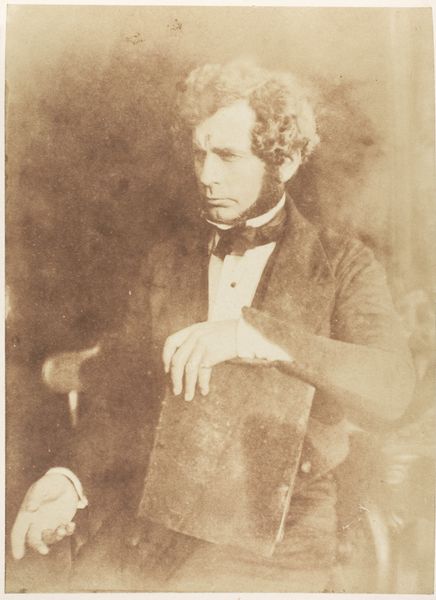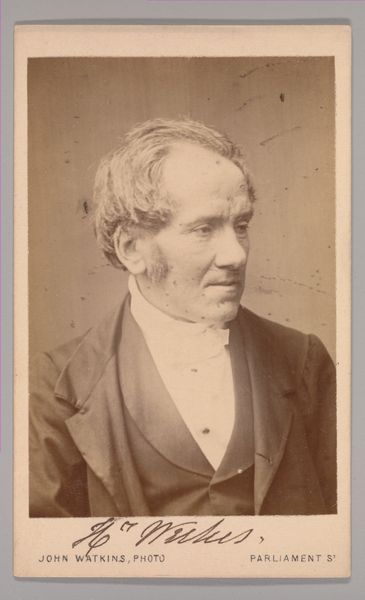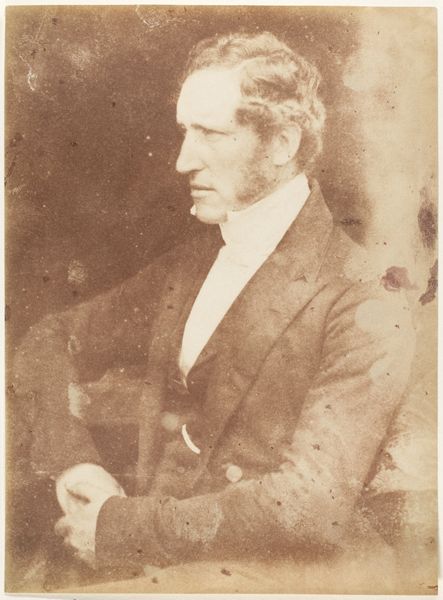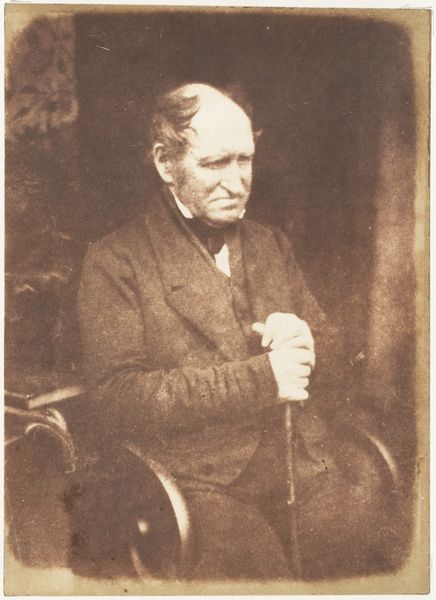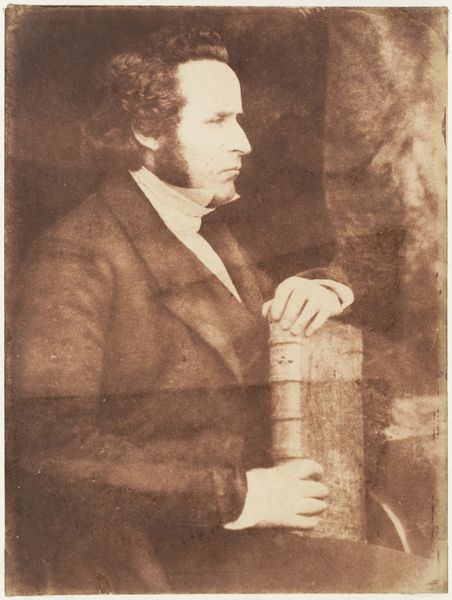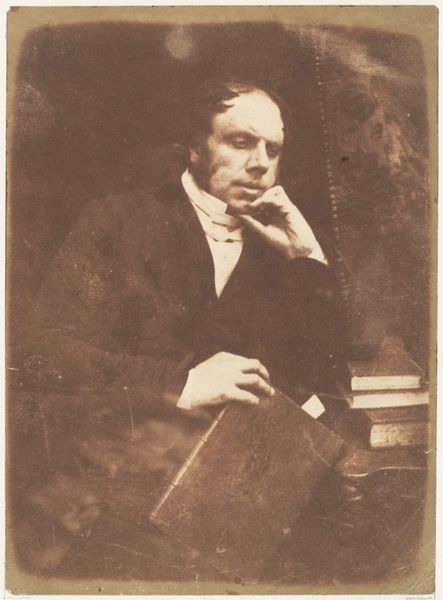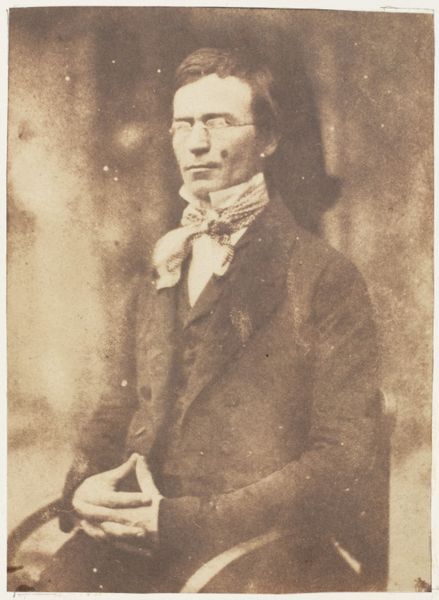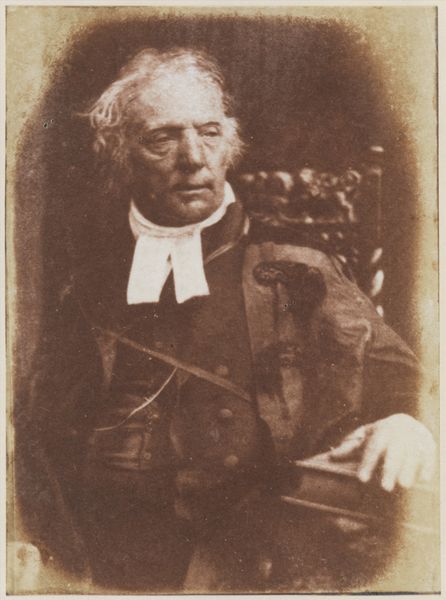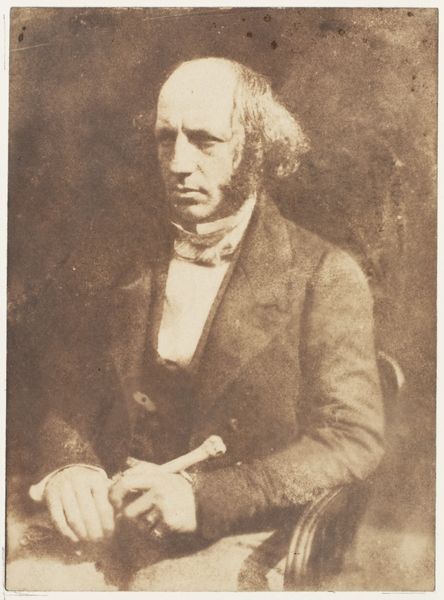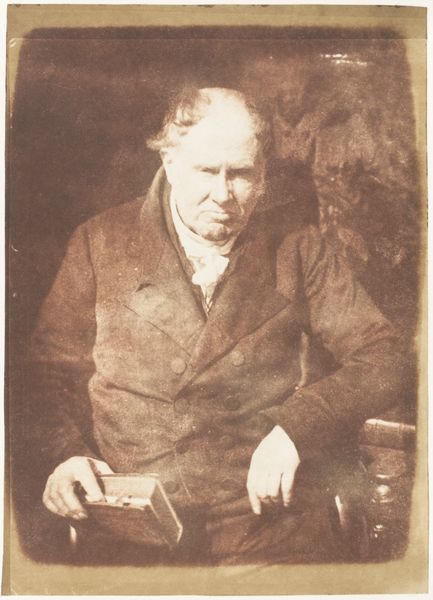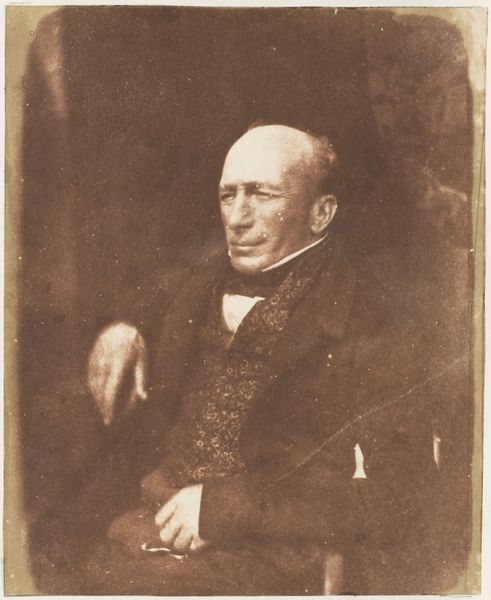
daguerreotype, photography
#
portrait
#
daguerreotype
#
photography
#
romanticism
#
academic-art
#
portrait photography
Copyright: Public Domain
Curator: Looking at it now, what immediately strikes you about this daguerreotype, Rev. Dr. Keith by Hill and Adamson, made sometime between 1843 and 1847? Editor: The way the light catches the sitter’s face and hands really gives the image a feeling of quiet contemplation. The tones are muted, sepia, contributing to this somewhat solemn atmosphere. It evokes a profound sense of humanity. Curator: I find that very insightful. Now, consider the conditions of production in the mid-19th century. Think about the technical knowledge needed to create this image, and the physical effort in preparing the plates and chemicals. How does that manual labor connect to our perception of value? Editor: Exactly. Because early photography demanded a significant engagement, a lot of physical labor, we see the image, not as a simple record, but as a kind of cultural artifact laden with meanings connected to class, gender and knowledge. What can we tell me about the sitter? Curator: He’s dressed in the style typical for someone of his standing. A professional. But the very act of capturing his image – a lengthy exposure – demanded his stillness and cooperation, becoming part of the photograph-making process. The books beside him further indicate not only his trade as reverend, but symbolize literacy, knowledge, and status. The image becomes an accessible and democratized art for middle-class families. Editor: I think understanding Hill and Adamson's choice of subject is important here. Photography was making portraiture accessible beyond the elites, shaping perceptions of who deserved to be remembered and represented. Rev. Dr. Keith becomes part of a visual discourse about respectability, leadership, and spiritual guidance within the burgeoning middle class. Curator: Absolutely. Let's not forget that the material object itself – the silver-plated copper, the glass cover – represents a careful negotiation between technology, artistry, and the marketplace. The daguerreotype wasn’t just about capturing a likeness; it was also about crafting a desirable object. Editor: Ultimately, thinking about this image, I see it as something beyond just a portrait. The image offers a tangible connection to the social and political structures that determined how people in the past lived and sought representation. Curator: That said, this image showcases the skillful interplay between chemical processes, the agency of the artist, and, crucially, the socio-economic context of early photographic practices. Editor: Yes, together, the historical and the material bring us closer to understanding photography as not just art, but as a product, a process, and a carrier of cultural significance.
Comments
No comments
Be the first to comment and join the conversation on the ultimate creative platform.

